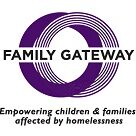August 11, 2022 – Axios – Tasha Tsiaperas
Signs of rising homelessness pepper the city: a sleeping bag at a train station, a cardboard shanty under a highway, a tent tucked into the brush, a car stuffed with belongings and towels covering the windows.
Driving the news: Dallas leaders are prioritizing cleaning up debris around campsites, closing more encampments and getting people into housing.
- But activists have pushed for people to have more time to pack and find other places to stay before the city closes campsites.
State of play: More people are slipping into homelessness because of rising rents, high inflation, and the end of pandemic-era eviction protections and stimulus payments.
- Shelter service providers are reporting more calls for help this year than in the past two years combined. And the need is well above pre-pandemic levels.
Why it matters: The city of Dallas and homeless services providers have worked for years to develop an efficient system to move people off the streets and into affordable housing, but those efforts could be thwarted by new demand.
By the numbers: Family Gateway, which serves Dallas and Collin counties, received 4,437 calls between January and June this year, up from 1,828 during the same period last year. Of those, 530 callers reported living in cars with their families.
- The first day it opened its expanded 60,000-square-foot shelter, in June, Dallas’ Austin Street Center had 54 new people ready to stay there that night. The new building houses 350 people, up from 248 at its previous site, and has the capacity for more.
- OurCalling, a Dallas County nonprofit that assists people experiencing homelessness, meets about 80 new people every week now, up from about 10 a week several years ago.
What they’re saying: Shelter providers are experiencing the crisis people expected in 2020 with “a whole new batch of people who normally wouldn’t be homeless,” according to Family Gateway president and CEO Ellen Magnis.
- “If you were just barely holding on, you’re not able to hold on anymore,” Magnis told Axios.
Flashback: A public-private partnership launched last year with the goal of housing 2,700 people by October 2023 by incentivizing landlords to accept government housing vouchers.
- So far the rapid rehousing program has moved at least 1,019 people into homes.
Yes, but: Moving an unhoused person off the street isn’t as simple as saying, “Hey, here’s a home.”
- The U.S. Department of Housing and Urban Development lays out definitions for which people can receive which funding to move them into housing.
- There are funding streams for specific populations, including the chronically homeless, veterans and youth.
- Even if someone secures financial assistance, they still have to find a landlord who will accept their housing voucher.
How it works: Metro Dallas Homeless Alliance is the lead agency in Dallas and Collin counties’ homeless response. It’s responsible for directing continuum of care funding for housing homeless individuals and families.
What we’re watching: How the rapid rehousing program and other homeless services keep up with the spiking demand.
Click here to view the full story.
